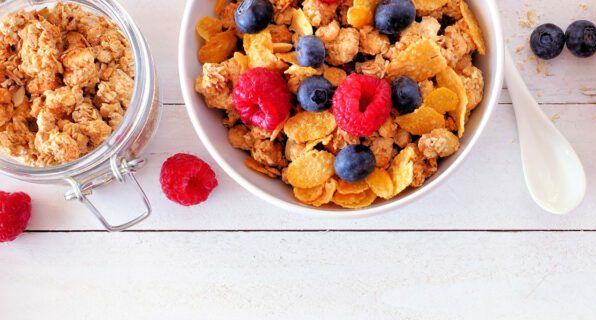Did you know that almost 80% of Irish people don’t get enough fibre in their diets but fibre is like a natural sweeping brush for the gut? Fibre contains no calories and is not actually a nutrient as we do not absorb it but it is imperative for good health. It slows down the absorption of sugar and fats in the blood which help
regulate blood sugar levels. And those who eat more fibre tend to be leaner!
Fibre has many benefits, one of which is keeping our digestion regular. I find that most people think they are eating enough fibre by having a high fibre breakfast cereal or 1-2 pieces of fruit or vegetables per day .
However this is not the case, in fact in Ireland the average person eats less than 14g per day! We need to aim for 24-35g of fibre per day. For kids up to the age of 18 they need their age plus 5g so e.g. if you have a 10 year old they would need 15g per day. To meet these goals you need to include some fibre at each
meal.
As fibre helps you feel fuller for longer choosing foods that contain fibre will help you feel more satisfied. For example a pear contains about 80-calories with 5-6g of fibre so you will feel fuller afterwards than you would if you ate a 80-calorie snack with no fibre. Because of this, fibre can help you maintain a healthy weight. The easiest ways to increase your family fibre intake of fibre is to ensure some colourful fruit or vegetable at every meal, include fruit or vegetables as snacks, chose higher fibre breakfast cereals, use wholegrain breads & cereals and keep the skin on your potatoes.
On average most servings (80g) of fruit or vegetables will offer between 2-4g of fibre. Berries happen to yield one of the best fibre-per-calorie ratios. Since berries are packed with tiny seeds, their fibre content is typically higher than that of many other fruits. So an 80g portion of raspberries will provide about 5g of
fibre in just 20 calories!
One word of warning though is to go slowly when increasing your fibre! If you normally eat very little fibre you will need to increase it gradually over a couple of weeks as your bowel adjusts to getting more fibre. And drink lots of water…fibre soaks up lots of fluid in the bowel which helps keep your stool soft and moving. For most people 1.5-2L of water per day is the right amount. If you find you have a little more wind or altered bowel habit at the beginning down worry this should settle down quickly…and then you will get to enjoy all the health benefits of having a fibre filled diet!
How can I add more fibre?
You need to think about fibre at every meal
Make sure you get your ‘5-a-day’ from fruit and vegetables – this will give you about 10g of fibre.
Go for a high fibre cereal for breakfast – check the labels and look for cereals with ‘6g of fibre or more per 100g of cereal’
Add more beans – beans on toast, bean salads, chili-con-carne with kidney beans.
Add lentils to soups, stews and casseroles. Try adding a handful of red lentils to Bolognese
Go for brown rice, brown pasta and baked potatoes (and remember to eat the skins!).
Make sure half of your plate at lunch and dinner comes from vegetables or salad.
Add seeds like sunflower, sesame and pumpkin seeds to cereals, yoghurt and salads.
Snack on nuts and dried fruit – go for mixed peanuts and raisins; apricots; brazil nuts and hazelnuts.
Top ten fibre rich foods to include in your weekly shopping basket for the family;
- Breakfast cereals with more than 6g of fibre per 100g.
- Wholegrain breads, rolls and pitta pockets.
- Nuts.
- Beans.
- Seeds.
- Peanut butter.
- Popcorn.
- Fruits and vegetables.
- Dried fruit e.g. raisins, apricots, prunes.
- Fruit and vegetable juices.



